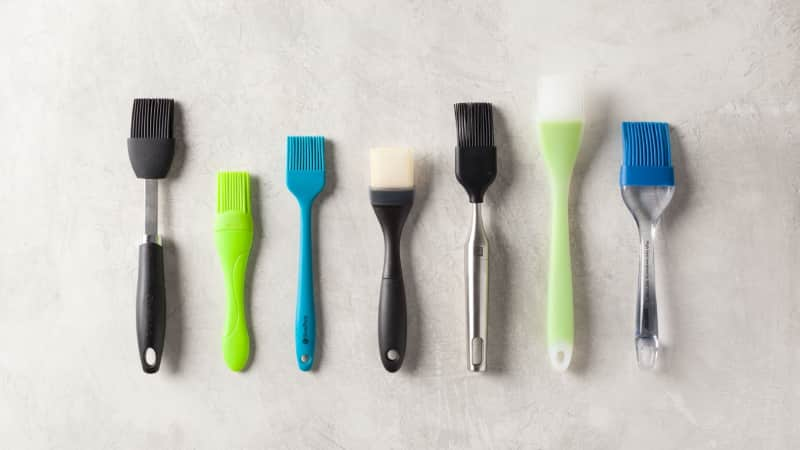The Best Pastry Brushes
Equipment Review
Silicone brushes can baste, glaze, and then clean up in the dishwasher. Which is best?
Published Nov. 1, 2018. Appears in America's Test Kitchen TV Season 20: Chicken and Biscuits

In the kitchen, we use brushes for all kinds of tasks: basting, glazing, and spreading melted butter or egg wash, to name just a few. The bristles on these brushes come in two materials—natural fiber (typically boar's hair) and silicone—and we like each type for different reasons. Natural-fiber brushes are especially good at picking up liquids and distributing them gently and evenly; we use them for pastry and other tasks where control and a delicate touch are critical. Silicone brushes don't pick up as much liquid as their natural-fiber siblings, and they are a little rougher on delicate foods. But they never shed, are heat-resistant to high temperatures, and are much easier to clean. We recommend them for basting meat or poultry with glaze or marinade and for greasing hot pans.
It had been a while since we last tested silicone brushes, and we wanted to know if our favorite, the OXO Good Grips Silicone Pastry Brush ($7.99), would hold up against newer competitors. So we bought seven models priced from $4.98 to $21.95, including our old winner. Each brush was dishwasher-safe, heat-safe to at least 400 degrees, and had a head width of 1.25 to 1.6 inches—the most commonly available size. We then used the brushes in a few typical tasks, applying ketchupy glaze to meatloaf and melted butter to a hot skillet, as you might do to prep the surface for pancakes. We also used the brushes to apply egg wash to pie dough, because while natural-fiber brushes generally do a better job with this task, many home cooks might have only a silicone brush or prefer to use one for its easier cleanup with the raw egg.
We were surprised to find that despite differences in the length, thickness, and number of bristles, almost all the models performed similarly. We weighed the amount of liquid that each brush picked up on each pass and found relatively little variation, except for one model. This brush took up about two-thirds the liquid that the other brushes did, and thus required almost twice as many passes as the other brushes to glaze the entire surface of the meatloaf and a few extra passes to cover the pie dough and hot skillet. Why? This brush had the narrowest head in the lineup, measuring 1.25 inches wide. It was just too small to provide enough coverage; we preferred brushes with slightly wider heads of at least 1.5 inches.
The flexibility of the bristles also mattered. Those that were too floppy were harder to control and direct, dripping and flicking liquid a little bit more than we liked. Bristles that were too rigid were rougher and less agile, poking at the soft meatloaf and occasionally threatening to ...

The mission of America’s Test Kitchen Reviews is to find the best equipment and ingredients for the home cook through rigorous, hands-on testing. We stand behind our winners so much that we even put our seal of approval on them.

Miye is a senior editor for ATK Reviews. She covers booze, blades, and gadgets of questionable value.

This is a members' feature.